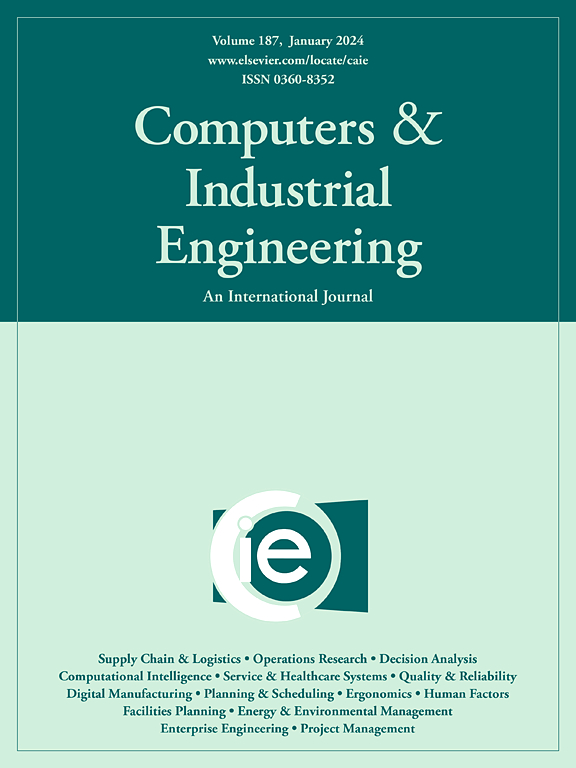Product tracing or component tracing? Blockchain adoption in a two-echelon supply chain management
IF 6.7
1区 工程技术
Q1 COMPUTER SCIENCE, INTERDISCIPLINARY APPLICATIONS
引用次数: 0
Abstract
Consumer awareness of product authenticity and carbon footprint tracing are among the most remarkable reasons for adopting blockchain in the supply chain in today’s world. However, the research literature has not yet examined specific ways to adopt blockchain in the supply chain. This study aims to develop a decision support tool to deal with the adoption of blockchain technology to design a two-echelon supply chain. In this regard, four specific cases for integrating supply chain and blockchain are developed based on types of tracing and block generation authority. In product tracing, green products are investigated throughout the supply chain, while in component tracing, green products are examined between the components of the supply chain. As it is necessary to record and verify the supply chain information by authorities in the blockchain network, in this work, such authorities are taken into account for both links and members of the supply chain. As far as we know, this is the first attempt to classify the various methods of adopting blockchain in Green Supply Chain Management (GSCM) and propose mathematical optimization models related to them. In this line, four Mixed-Integer Linear Programming (MILP) models with the aim of minimizing the costs related to the physical supply chain and blockchain deployment are developed for the integration of the supply chain with blockchain technology. They are treated by the Branch and Efficiency (B&E) algorithm and Simultaneous Data Envelopment Analysis (SDEA) model considering common (cost and service) and innovative (blockchain) criteria. The results showed that link-based and component tracing models are cost-effective. In addition, the cost objective function of green product tracing is more sensitive to the number of blocks than that of component tracing. Eventually, the study provides great opportunities for decision-makers and managers to understand how to adopt blockchain in terms of supply chain network characteristics, cost, transparency, and service.
求助全文
约1分钟内获得全文
求助全文
来源期刊

Computers & Industrial Engineering
工程技术-工程:工业
CiteScore
12.70
自引率
12.70%
发文量
794
审稿时长
10.6 months
期刊介绍:
Computers & Industrial Engineering (CAIE) is dedicated to researchers, educators, and practitioners in industrial engineering and related fields. Pioneering the integration of computers in research, education, and practice, industrial engineering has evolved to make computers and electronic communication integral to its domain. CAIE publishes original contributions focusing on the development of novel computerized methodologies to address industrial engineering problems. It also highlights the applications of these methodologies to issues within the broader industrial engineering and associated communities. The journal actively encourages submissions that push the boundaries of fundamental theories and concepts in industrial engineering techniques.
 求助内容:
求助内容: 应助结果提醒方式:
应助结果提醒方式:


